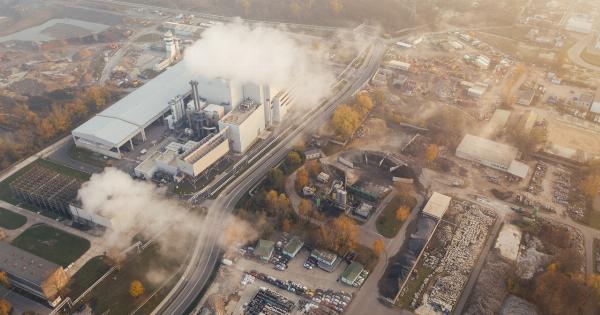Air pollution is a major concern all over the world, and its effects on human health, particularly on children, cannot be overstated.
Numerous studies have shown that exposure to airborne pollutants can have serious implications for children’s respiratory health and overall well-being. In this article, we will discuss some of the most common and harmful airborne pollutants that pose a danger to children’s lungs.
1. Particulate Matter (PM)
Particulate matter refers to tiny particles and droplets suspended in the air.
These particles can vary in size, with PM10 (particles with a diameter of 10 micrometers or smaller) and PM2.5 (particles with a diameter of 2.5 micrometers or smaller) being of particular concern. When children inhale these particles, they can penetrate deep into the respiratory system, causing irritation, inflammation, and damage to the lungs.
2. Ozone (O3)
Ozone is a highly reactive gas that forms when pollutants emitted by cars, power plants, and other sources react with sunlight.
While the ozone layer in the upper atmosphere protects us from harmful UV radiation, ground-level ozone is a respiratory irritant. Children exposed to high levels of ozone may experience coughing, wheezing, shortness of breath, and increased susceptibility to respiratory infections.
3. Nitrogen Dioxide (NO2)
Nitrogen dioxide is a reddish-brown gas primarily released from fossil fuel combustion, motor vehicles, and industrial processes.
Children exposed to high levels of NO2 may experience respiratory symptoms such as coughing, wheezing, and increased susceptibility to respiratory infections. Long-term exposure to NO2 has been associated with reduced lung function development in children.
4. Carbon Monoxide (CO)
Carbon monoxide is a colorless, odorless gas emitted from the combustion of fossil fuels, such as gasoline and coal. Children exposed to high levels of CO may experience neurological symptoms, including headaches, dizziness, and confusion.
Prolonged exposure to high levels of CO can lead to reduced oxygen-carrying capacity in the blood, compromising lung function.
5. Sulfur Dioxide (SO2)
Sulfur dioxide is a gas released from the burning of fossil fuels, particularly in power plants and industrial processes. Exposure to high levels of SO2 can cause respiratory symptoms, such as coughing, wheezing, and shortness of breath.
Children with asthma are particularly vulnerable to the effects of SO2 exposure.
6. Volatile Organic Compounds (VOCs)
Volatile organic compounds are a diverse group of chemicals emitted as gases from various products, such as paints, cleaning supplies, and solvents.
VOCs can cause eye, nose, and throat irritation, as well as headaches, dizziness, and breathing problems in children. Some VOCs, such as benzene and formaldehyde, have been classified as carcinogens.
7. Lead Particles
Lead particles can be present in the air due to the combustion of leaded gasoline, industrial emissions, and lead-based paints.
Children are particularly vulnerable to lead exposure, as it can affect their neurodevelopment and cause cognitive impairment. Lead particles can also contribute to respiratory problems, such as decreased lung function and increased vulnerability to respiratory infections.
8. Polycyclic Aromatic Hydrocarbons (PAHs)
Polycyclic aromatic hydrocarbons are a group of chemicals released through the incomplete combustion of fossil fuels, tobacco smoke, and wood-burning.
Children exposed to high levels of PAHs may experience respiratory symptoms, such as coughing and wheezing. Some PAHs have also been classified as carcinogens.
9. Indoor Allergens
Indoor allergens, such as dust mites, pet dander, mold, and cockroach droppings, can trigger allergies and asthma symptoms in children. These allergens are often present in indoor environments and can have a significant impact on lung health.
Children with allergies or asthma may be particularly susceptible to the adverse effects of indoor allergens on their respiratory system.
10. Secondhand Smoke
Secondhand smoke is the combination of smoke from the burning end of a cigarette and the smoke exhaled by smokers. Children exposed to secondhand smoke are at a higher risk of developing respiratory infections, asthma, and other respiratory disorders.
The harmful chemicals present in tobacco smoke can cause inflammation and damage to the lungs.




























